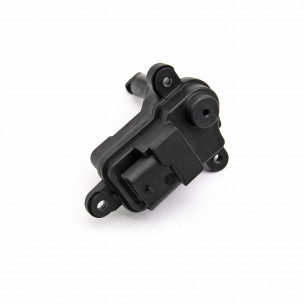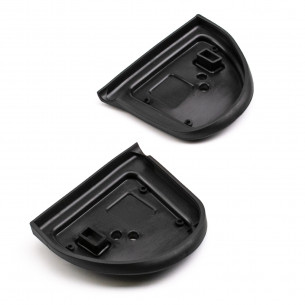_1734351571.jpg)
Car Key Fobs Explained: How They Work and Why They’re Essential
What Exactly is a Car Key Fob? If you’re like most drivers today, your car key fob is something you use daily without a second thought. But have you ever stopped to wonder how it actually works? Car key fobs are small, electronic devices that allow you to unlock, lock, and even start your vehicle remotely with just the press of a button. They’re far more advanced than traditional metal keys, making your life more convenient and your vehicle more secure. Let’s take a deeper look at what key fobs are, how they work, and why they’re essential for every car owner. How Do Car Key Fobs Work? Car key fobs operate using radio frequency identification (RFID) technology. Here’s a simplified breakdown: The key fob has a small transmitter inside. When you press a button, the fob sends a coded radio signal to your car’s receiver. The receiver recognizes the code and performs the requested action—like unlocking the doors or starting the ignition. Key fobs are designed to be secure. Most modern ones use rolling codes , meaning the signal changes every time you use the fob, making it nearly impossible for thieves to intercept or duplicate the signal. The Benefits of Using a Car Key Fob Key fobs aren’t just cool pieces of technology—they provide several benefits: Convenience : No more fumbling with traditional keys. You can unlock your car, start the engine, or open the trunk with just one press. Enhanced Security : Rolling codes prevent unauthorized access to your car. Some fobs even include alarms or panic buttons for emergencies. Keyless Entry : Many modern cars unlock automatically when the key fob is nearby, saving time and effort. Remote Start : In some cases, you can start your car from a distance—perfect for heating it in winter or cooling it in summer before you get inside. Types of Car Key Fobs Not all key fobs are the same. Here are the most common types you might encounter: Basic Key Fobs : These allow you to lock/unlock doors and open the trunk. Keyless Entry Fobs : Unlock the car automatically when the fob is within a certain range. Smart Keys : Advanced fobs that work with push-to-start systems. Remote Start Fobs : Allow you to start the car from a distance for added convenience. Understanding which type you have will make it easier to troubleshoot or replace your key fob when necessary. Common Car Key Fob Problems and How to Fix Them Like any electronic device, key fobs can develop issues over time. Here are a few common problems and simple fixes: Dead Battery : Symptom : The fob stops working or has reduced range. Solution : Replace the battery (usually a CR2032 or CR2025). You can do this at home with a flat screwdriver. Signal Interference : Symptom : The key fob works intermittently. Solution : Move closer to the vehicle or away from devices causing interference. Damaged Key Fob : Symptom : Buttons stop working or the fob is cracked. Solution : Replace the key fob case or get a new fob programmed. Deprogrammed Fob : Symptom : The car no longer recognizes the fob. Solution : You may need to reprogram the key fob. Some vehicles allow DIY programming, while others require professional help. How to Replace a Car Key Fob on a Budget Key fobs can be expensive if you go directly to a dealership, but there are affordable alternatives : Third-Party Sellers : Buy replacement key fobs online or at auto parts stores at a fraction of the cost. Reprogramming Services : Automotive locksmiths can often program key fobs for less than a dealership. DIY Options : Some car manuals provide instructions for programming new fobs yourself—saving you both time and money. Quick Tip : Always ensure you purchase a compatible key fob for your car make and model. Do Car Key Fobs Recharge Themselves? Some car key fobs, especially those with smart key technology , recharge wirelessly when inserted into the ignition or placed in a specific slot. However, most key fobs run on small coin batteries, which will need replacement every 2-3 years, depending on usage. Replacing the battery is quick, inexpensive, and can often be done in minutes. Key Takeaways: Why You Need a Working Key Fob Car key fobs are an essential part of modern vehicle convenience and security. They allow you to: Unlock and lock your car with ease. Start your vehicle remotely. Keep your car secure with advanced anti-theft features. If your key fob starts to malfunction, don’t panic. Whether it’s a simple battery replacement or a full fob replacement, there are cost-effective solutions to get you back on the road quickly.































_1733738757.jpg)
_1733388347.jpg)
_1733227688.jpg)